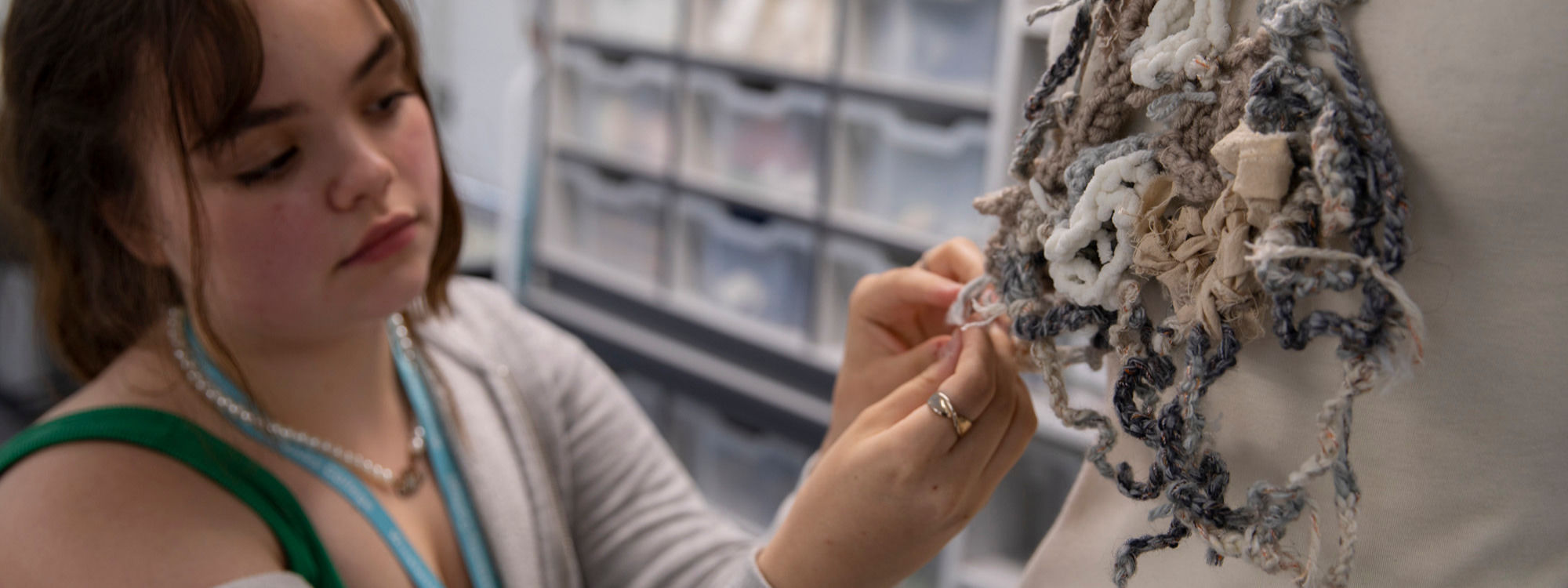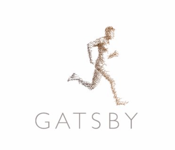- Home
- Curriculum
- Course Search
- Textiles
Textiles
If you enjoy making, Textiles is the course for you.
Why study Textiles?
Textiles is an exciting and varied course where you are encouraged to explore your creativity through a wide range of practical textile processes and techniques. If you love stitching, folding, cutting, slicing, shredding, knotting, burning, gluing, folding, and pleating then Textiles is the course for you.
You will be continually encouraged to draw visual inspiration from everything and anything within the natural and artificial world. Lively and experimental drawing/fashion illustration sessions will be delivered throughout the year to help you gain a greater understanding of surface, structure and form.
2021 Exhibition
What will I study?
At the start of the course you will embark on a series of workshops where you are encouraged to be adventurous and innovative whilst working with materials and processes, which include printmaking, stitch and metalwork. What you learn at the start of the year will provide a solid foundation for your self-written personal investigation, in which you will explore themes and subject matter chosen by you.
Entry requirements
No specific entry requirements (other than the College entry points) but consider workload of more than 2 Arts/Perf courses
Which exam board & how will I be assessed?
EDUQAS (WJEC) coursework
- Component 1 – Personal investigation (60%).
- Component 2 – Externally set assignment (40%).
- Internally marked and externally moderated.
Where could it take me?
Studying A-level Textiles offers exciting pathways to university and the creative industries, often through our thriving Art Foundation course. Many prestigious art institutions require this foundation year, which prepares students for advanced study. Recent graduates have progressed to renowned textiles and fashion courses at Central Saint Martins, Chelsea, London College of Fashion (including Fashion, Embroidery, and Fashion Communication), and Westminster University. One student even studied fashion at Kingston University and spent their final summer in New York with Ralph Lauren. This route nurtures creativity and technical skills, opening doors to world-class education and inspiring career opportunities in textiles and fashion.
For further information on careers in Textiles, please visit:
What can I do with a textile design degree? | Prospects.ac.ukTo explore top-ranked universities for studying Textiles and view available courses, please visit:
Best UK universities for fashion & textiles – league table | Fashion and textiles | The GuardianTo see the current jobs available with a Textiles degree, please visit:
What Can You Do With a Textile Degree? (With Salary and Duty Info) | Indeed.com
Subject combinations
Textiles can be studied alongside any combination of courses. Most popular are Art, Craft and Design, Graphic Communications, Photography, any English course, Psychology, Sociology, Media, and Performing Arts courses.
What support is available?
When you enrol we will make sure that you are receiving all the support you need, for example you may be entitled to extra time in your exams, help with written analysis/annotation or practical support from our two specialist technicians. Studios are always available in your independent study time.
What extracurricular activities are available?
In recent years students have enjoyed reference gathering trips to Morocco, Berlin, Madrid, London, Liverpool, and Manchester. Throughout the year and across the courses and disciplines there are opportunities to enter internal and external competitions and live briefs. At the end of the second year you also have the chance to present your highly creative and individual work in a summer exhibition.
Did you know?
63% of Winstanley College Textiles students achieve an A*- A grade.
A popular destination for Textiles students is our Art Foundation course. Approximately 1 in 5 Art students across the department take this route to top universities or the workplace.















